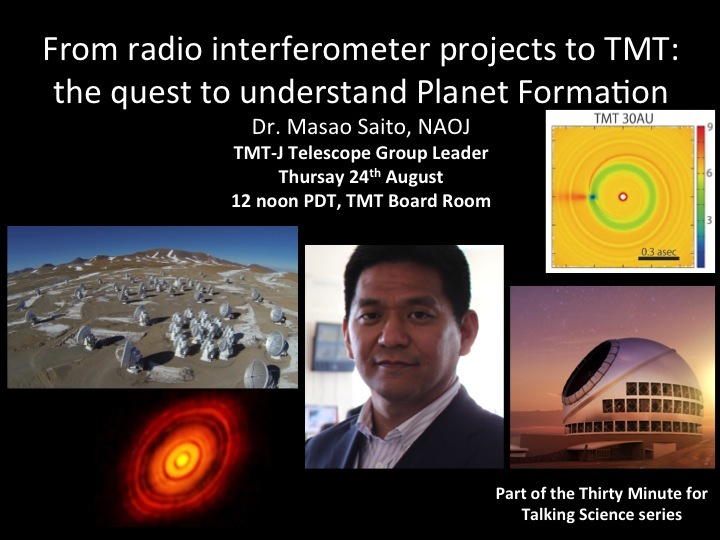


Dr. Masao Saito from NJAO, Japan will provide a historical perspective on various radio interferometers used to study protoplanetary disks and how telescopes like TMT can take planetary exploration to the next level by studying planets directly.
I was interested in formation of planets around Sun-like stars during my grad-student era and has been involved in various radio interferometery projects to study protoplanetary disks. I started my career in Nobeyama Radio Observatory mostly using the Nobeyama Millimeter Array (NMA) in Japan to observe rotating gas disks around young Sun-like stars in Taurus. After that I spent some time in the SubMillimeter Array (SMA) in Boston and Hawaii, and later moved to Atacama Large Millimeter/submillimeter Array (ALMA). Recently ALMA has revealed very detailed disk images that we dreamed about in the past and has indicated possible presence of giant planets. Now my interest is gradually shifted to planet themselves that desparately needs TMT. In my talk, I will present the above scientific topic very briefly along with my personal career involved in various radio interferometer projects.
